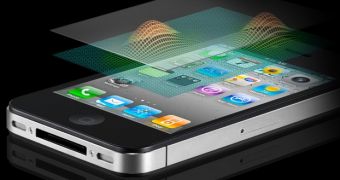The folks at letemsvetemapplem.eu have posted a series of videos which compare the iPhone 4 and the fourth-generation iPod touch. One of the videos interestingly (though not surprisingly) reveals that Apple is not using the same kind of Retina display in the two devices.
The first video posted by the Czeh site is a speed boot test between the several iOS devices, including iPad, iPhone 4, iPod touch and iPhone 3GS.
The differences are not very big. Notably, the iPad takes considerably less time to boot up.
However, a second video shows the iPhone 4 and iPod touch displays from different angles. The movement results in a substantially altered viewing experience on the latter.
Apple is known to have equipped the new iPod touch with a Retina display, which is also found on the company’s iPhone 4.
However, according to these tests, it appears that the Retina display employed by the fourth-generation iPod touch does not boast in-plane switching (IPS) technology.
“The iPhone 4 Retina display uses technology called IPS (in-plane switching) — the same technology used in the Apple LED Cinema Display and iPad — to achieve a wider viewing angle than on typical LCDs,” Apple explains on its web site.
According to the phone’s makers, “…you can hold iPhone 4 almost any way you want and still get a brilliant picture.”
“That’s perfect when you’re sharing photos with a friend or moving your iPhone around while playing a driving or flying game,” Apple adds.
One thing the iPod touch does retain in the Retina display is the pixel count - “By developing pixels a mere 78 micrometers wide, Apple engineers were able to pack four times the number of pixels into the same 3.5-inch (diagonal) screen found on earlier iPhone models,” says the Cupertino, California-based electronics maker.
The same is applied for the latest iPod touch, according to the product's tech specs page.
According to Apple, the resulting pixel density (326 pixels per inch) makes text and graphics look smooth and continuous at any size.

 14 DAY TRIAL //
14 DAY TRIAL //